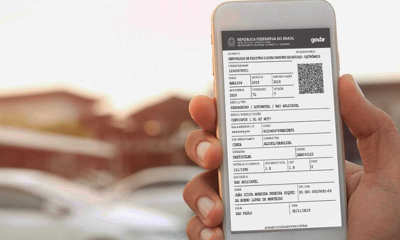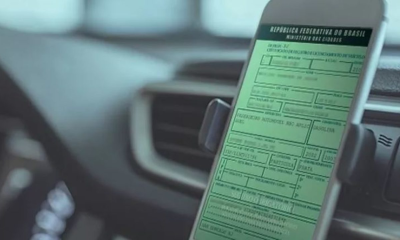Tips for Sustainable Driving: How to Reduce Your Carbon Footprint on the Road
Sustainable driving is a growing concern among individuals who are looking to reduce their carbon footprint and live a more eco-friendly lifestyle. With the rise of electric and hybrid vehicles, sustainable driving has become more accessible to the general public. However, there are still plenty of ways to drive sustainably even if you don’t own an eco-friendly vehicle.

One of the easiest ways to practice sustainable driving is to reduce your speed and avoid sudden accelerations and stops. This not only reduces your carbon emissions but also improves your fuel efficiency. Another tip is to plan your routes ahead of time to avoid unnecessary driving and to carpool whenever possible. These small changes can make a big impact on the environment and your wallet.
By adopting green driving habits, individuals can reduce their carbon footprint and contribute to a more sustainable future. In this article, we will explore various tips and strategies for sustainable driving that anyone can implement, regardless of their vehicle type or driving style.
Understanding Sustainable Driving
As the world becomes more aware of the impact of human activities on the environment, it has become increasingly important to adopt sustainable practices in all aspects of life, including transportation. Sustainable driving is a way of driving that minimizes the negative impact of driving on the environment.
The Impact of Driving on Climate Change
Driving is a significant contributor to climate change. The burning of fossil fuels in vehicles releases carbon dioxide and other greenhouse gases into the atmosphere, which trap heat and cause the Earth’s temperature to rise. This rise in temperature leads to a range of negative consequences, including more frequent and severe weather events, rising sea levels, and loss of biodiversity.
Benefits of Eco-Friendly Transportation
There are many benefits to eco-friendly transportation, including reduced greenhouse gas emissions, improved air quality, and reduced dependence on fossil fuels. Sustainable driving practices can also save money on fuel and maintenance costs, and can improve the overall driving experience.
To drive sustainably, individuals can adopt a range of practices, such as using public transportation, carpooling, biking or walking, and driving a fuel-efficient vehicle. It is also important to drive in a way that minimizes fuel consumption, such as avoiding aggressive driving, maintaining a steady speed, and keeping tires properly inflated.
By adopting sustainable driving practices, individuals can do their part to reduce their impact on the environment and help create a more sustainable future.
Practical Tips for Eco-Friendly Vehicle Use
Regular Vehicle Maintenance
Regular vehicle maintenance is essential for ensuring that your car is running at its best and consuming fuel efficiently. This includes regular tune-ups, oil changes, and air filter replacements. Keeping your vehicle well-maintained not only helps reduce emissions but also extends the life of your car.
Optimizing Fuel Consumption
Optimizing fuel consumption is another way to drive sustainably. Simple steps like avoiding rapid acceleration, maintaining a steady speed, and avoiding idling can significantly improve fuel economy. Additionally, reducing the weight of your car by removing unnecessary items can also improve fuel efficiency.
Smart Driving Habits
Smart driving habits are crucial for eco-friendly driving. This includes driving at a moderate speed, avoiding sudden braking, and anticipating traffic. Carpooling or using public transportation can also reduce your carbon footprint. Furthermore, electric vehicles, hybrids, and plug-in hybrids are becoming increasingly popular options for energy-efficient and fuel-efficient driving.
By following these practical tips, you can reduce your carbon footprint and contribute to a more sustainable future.
Alternative Modes of Transportation
Embracing Public and Shared Transport
One of the most effective ways to reduce carbon emissions is by embracing public and shared transportation. Taking the bus, train, or subway helps to reduce the number of cars on the road, which in turn reduces traffic congestion and air pollution. Carpooling is also a great way to reduce the number of cars on the road. By sharing a ride with others, you can save money on gas and reduce your carbon footprint.
The Rise of Electric and Hybrid Vehicles
Electric and hybrid vehicles are becoming increasingly popular as people look for ways to reduce their carbon footprint. These vehicles emit fewer greenhouse gases than traditional gas-powered cars and are more fuel-efficient. With the rise of electric and hybrid vehicles, there is also an increase in the number of charging stations available, making it easier for drivers to charge their vehicles.
Cycling and Walking: Healthy Choices
Cycling and walking are not only great for the environment, but they are also healthy choices. Biking or walking to work or school can help to reduce traffic congestion and air pollution. It is also a great way to get exercise and stay healthy. Many cities have bike-sharing programs, making it easy for people to rent a bike and get around town.
Overall, there are many alternative modes of transportation available that can help to reduce your carbon footprint and improve your health. By embracing public and shared transport, electric and hybrid vehicles, cycling, and walking, you can make a positive impact on the environment and your own well-being.
Driving Behavior and Environmental Impact
The Effects of Idling and Air Conditioning
Idling and air conditioning are two common practices that can have a significant impact on the environment and on your wallet. Idling your car for more than 10 seconds wastes fuel and releases unnecessary pollutants into the air. Turning off your engine while waiting in traffic or at a stoplight can save you money and reduce air pollution.
Air conditioning also has a significant impact on fuel consumption and emissions. Using the air conditioning system can reduce your car’s fuel efficiency by up to 10%, which translates to more greenhouse gas emissions. To minimize the impact of air conditioning, try to park in the shade, use a sunshade, or roll down your windows to get some fresh air.
Weight, Aerodynamics, and Fuel Use
Extra weight and poor aerodynamics can also have a negative impact on your car’s fuel efficiency. Carrying unnecessary weight in your trunk or on your roof can reduce your car’s fuel efficiency by up to 2%. Similarly, poor aerodynamics can increase drag and reduce your car’s fuel efficiency.
To minimize the impact of extra weight and poor aerodynamics, drive with only the necessary items in your car and remove any unnecessary accessories. You can also improve your car’s aerodynamics by keeping your windows closed and using a roof rack or cargo carrier only when necessary.
Eco-Friendly Driving Techniques
Driving smoothly and avoiding jerky driving can also help reduce your car’s fuel consumption and emissions. Accelerating and braking aggressively can reduce your car’s fuel efficiency by up to 33%. Instead, try to accelerate and brake gradually and maintain a steady speed when possible.
Regular maintenance is also important for improving your car’s fuel efficiency and reducing emissions. Keeping your tires properly inflated, replacing air filters, and using biodiesel or other alternative fuels can all help improve your car’s gas mileage and reduce its impact on the environment.
In heavy traffic, consider carpooling or using public transportation to reduce the number of cars on the road. By adopting eco-friendly driving techniques and making small changes to your driving behavior, you can help reduce air pollution, save money, and minimize your impact on the environment.
Frequently Asked Questions
What are the top strategies for reducing a vehicle’s environmental impact?
There are several strategies that drivers can adopt to reduce their vehicle’s environmental impact. These include carpooling, using public transportation, walking or biking for short trips, and driving a fuel-efficient vehicle. Additionally, reducing idling time, maintaining proper tire pressure, and avoiding aggressive driving can also help to minimize a vehicle’s carbon footprint.
How can adopting fuel-efficient driving techniques benefit the environment?
Adopting fuel-efficient driving techniques can benefit the environment in several ways. By driving at a steady speed, avoiding sudden acceleration and braking, and maintaining a safe distance from other vehicles, drivers can reduce fuel consumption and emissions. This can help to reduce air pollution and greenhouse gas emissions, which contribute to climate change.
What features should you look for in a car to ensure it is eco-friendly?
When shopping for an eco-friendly car, there are several features to consider. Look for vehicles with high fuel efficiency ratings, low emissions, and advanced safety features. Additionally, consider purchasing a hybrid or electric vehicle, which can significantly reduce your carbon footprint.
In what ways can a graduated driver licensing program contribute to safer and more sustainable driving habits?
A graduated driver licensing program can contribute to safer and more sustainable driving habits by providing new drivers with the necessary skills and knowledge to drive safely and responsibly. By requiring new drivers to complete a series of training courses and practice driving under supervision, graduated licensing programs can help to reduce accidents and promote sustainable driving habits.
How can personal responsibility and respect for passengers translate into environmentally conscious driving?
Personal responsibility and respect for passengers can translate into environmentally conscious driving by encouraging drivers to adopt safe and sustainable driving practices. By driving at a steady speed, avoiding sudden acceleration and braking, and maintaining a safe distance from other vehicles, drivers can reduce fuel consumption and emissions. This can help to minimize their environmental impact and promote a safer, more sustainable driving experience for all passengers.
What are some simple changes you can make to your driving habits to promote sustainability?
There are several simple changes you can make to your driving habits to promote sustainability. These include reducing idling time, maintaining proper tire pressure, avoiding aggressive driving, and driving at a steady speed. Additionally, consider carpooling, using public transportation, walking or biking for short trips, and driving a fuel-efficient vehicle to further reduce your environmental impact.
-

 Trânsito6 months ago
Trânsito6 months agoCNH Digital: Como Funciona e Quais os Benefícios para os Motoristas
-

 Trânsito6 months ago
Trânsito6 months agoCRLV Eletrônico: A Nova Era da Documentação Veicular
-

 Trânsito6 months ago
Trânsito6 months agoCadastro de Instrutor de Trânsito: Como Fazer a Inscrição ou Renovação
-

 Trânsito6 months ago
Trânsito6 months agoCarteira de Motorista na Palma da Mão: O Guia Completo da CNH Digital
-

 Trânsito6 months ago
Trânsito6 months agoO Guia Completo da CNH Digital: Como Obter e Utilizar
-

 Trânsito6 months ago
Trânsito6 months agoAplicativo CNH Digital: Facilidade e Praticidade na Gestão da Sua Habilitação
-

 Trânsito6 months ago
Trânsito6 months agoCRLV Digital: Descomplicando a Documentação dos Veículos
-

 Trânsito6 months ago
Trânsito6 months agoTransformando o Trânsito: A Era da Carteira Digital de Trânsito
